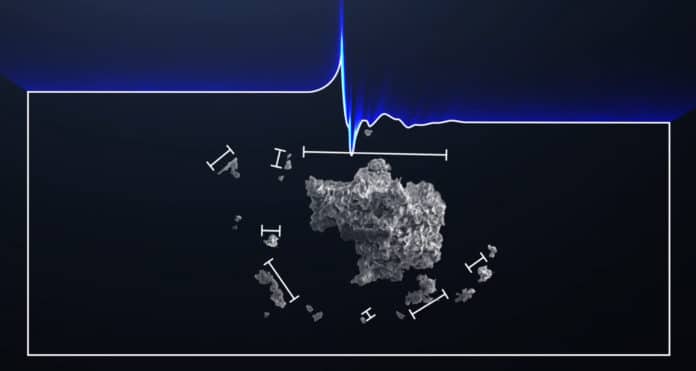Interstellar grain means tiny dust grains are floating aimlessly around the stars. Interstellar dust grains are formed from materials ejected by stars. The dust grains are much smaller than the dust we are familiar with here on Earth and resemble more closely the soot from a candle flame.
Recently, a team of scientists at SRON led by Elisa Costantini has created a map of dust grains in the Milky Way.
Galaxies may appear to be solid objects in our skies, with tightly packed clusters of stars, but in fact, galaxies contain huge amounts of space. However, this space is not as empty as you might think. It is filled with the so-called interstellar medium.
The interstellar medium is composed of gas, but around one percent is in the form of tiny grains of about 0.1 micron—one-thousandth the width of a human hair.
These grains are formed during the life cycles of stars. A star, and the planets around it, are created by a collapsing cloud of gas and dust. When the star evolves toward the end of its life, it expels a good fraction of its mass in the surrounding medium, creating new material for dust formation.
If the star ends its life with a supernova explosion, it will further enrich the environment with even more gas and dust. This, in turn, will eventually constitute new building blocks for stars and planets.
In this study, scientists used X-ray radiation to study the interstellar grains in our Milky Way. They explored the properties of the dust in central regions of the galaxy.
They found that the dust grains are consistently made of a glassy silicate: Olivine, which is a compound of magnesium, iron, silicon, and oxygen. The interaction with stellar radiation and cosmic rays melted these grains to form little glassy irregular spheres.
When they explored more diffuse regions away from the galactic center, they found clues for the presence of a larger variety in dust composition. This may give rise to diversified planetary systems. It might even be that our planetary system is the exception rather than the norm.
Elisa Costantini, who led the study, said, “Our solar system was formed in the outer regions of the galaxy and is the result of a complex sequence of events, including nearby supernova explosions. It remains an open question what is the right environment to form planetary systems and which of these events are vital to form a planet where life can flourish.”
The team then matched the observations from X-ray telescopes and synchrotron facilities. Using the latter, they characterize the features that interstellar dust analogs like silicates, oxides, and sulfates produce in X-rays.
By comparing these to the astronomical data to find the best matches, they observed several lines of sight that allowed them to explore different environments of the Milky Way.
